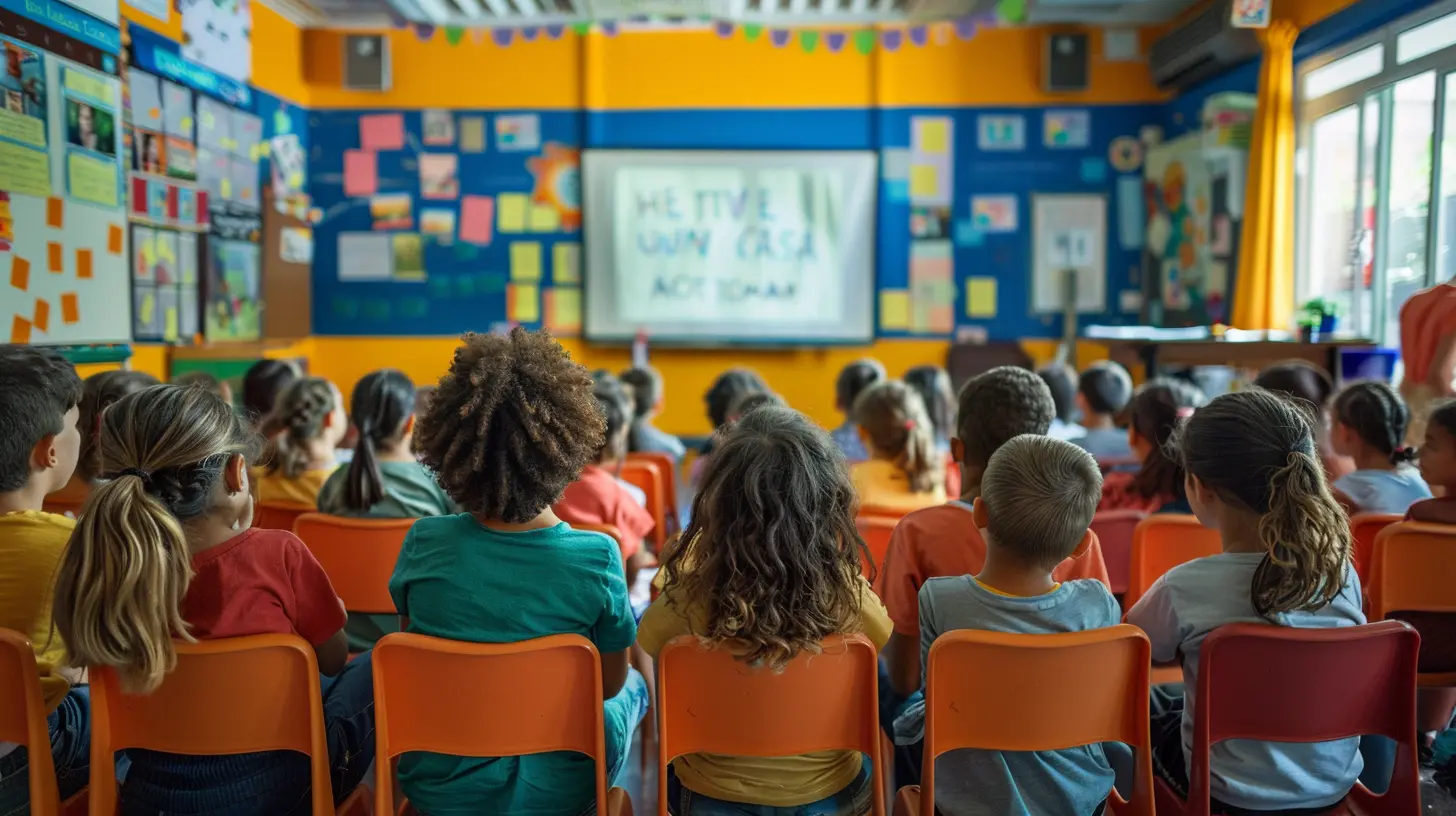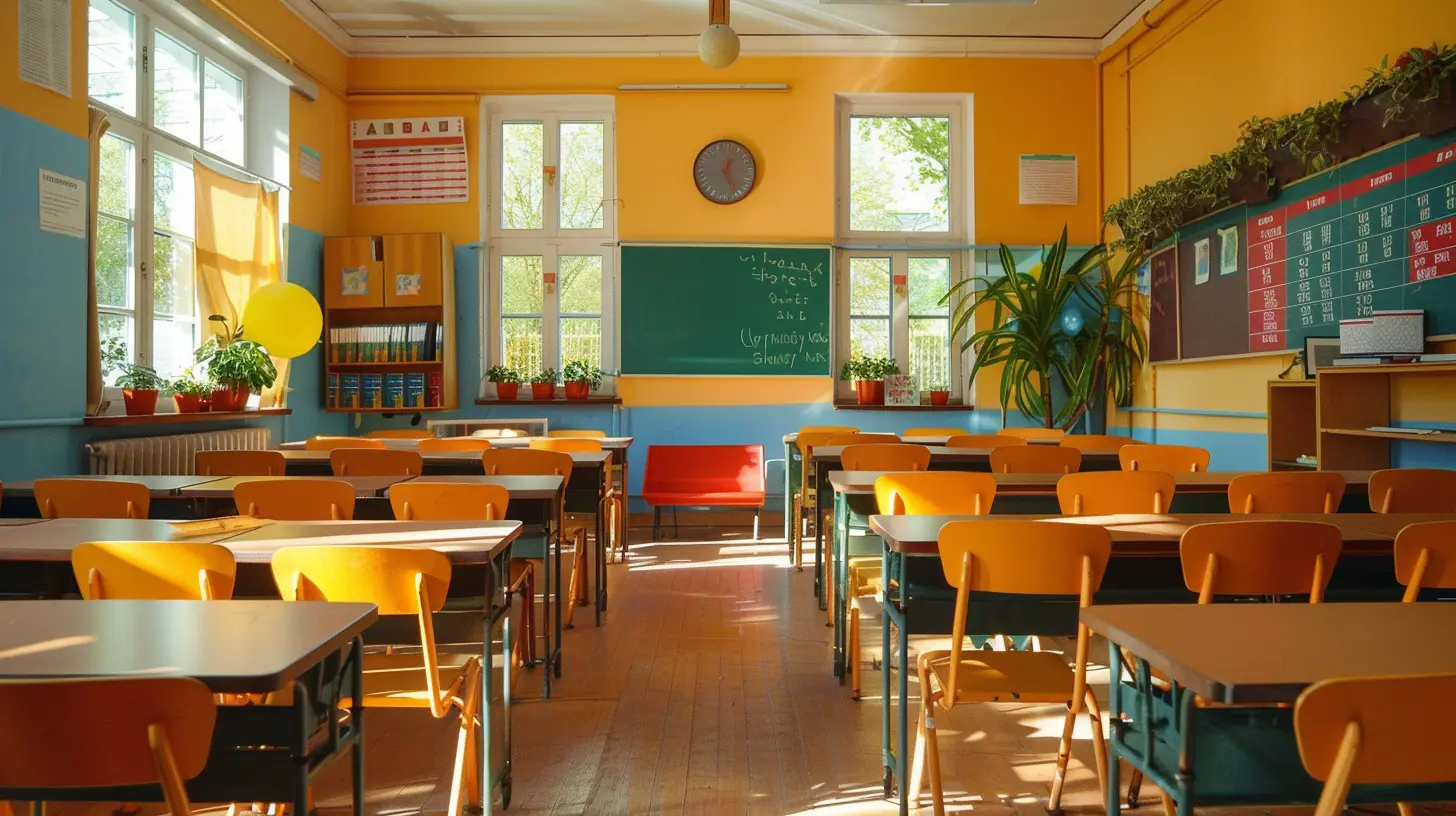Best Practices for Creating a Flipped Classroom
27 August 2025
Ah, the flipped classroom – the education world’s equivalent of turning your backpack inside out and finding a better way to carry things around. If you're an educator looking to shake things up and make your teaching sessions more interactive, engaging, and downright effective, you’ve just found your golden ticket.
But before you flip your classroom upside down (please don’t literally do that), let’s walk through what the flipped classroom model actually is and, more importantly, how you can nail it like a pro.

🧠 What is a Flipped Classroom?
In simple terms, a flipped classroom is like giving your students the movie preview before the main show. Instead of using class time to introduce new content through lectures, students explore new material at home—usually through videos, readings, and interactive content. Then, when they come to class, it’s all about collaboration, problem-solving, and hands-on activities.No more glazed-over eyes during PowerPoint marathons! Think of it as the educational version of “Netflix at home, game night at school.”

📚 Why Flip in the First Place?
Let’s be honest—traditional lectures can feel like watching paint dry. The flipped classroom brings in:- Better engagement – Students come prepared (or at least more than usual!)
- Personalized learning – Classroom time can address specific struggles
- Deeper understanding – Concept application > passive note-taking
- Enjoyable classes – Yes, enjoyable! That’s not a typo
Sounds dreamy, right? But like baking a cake, flipping your classroom requires the right ingredients and a little patience.
Ready to dive in? Let's break down the best practices for making your flipped classroom a smashing success.
🛠️ 1. Start Small, Dream Big
Okay, so you’re excited. You’ve read the buzz and want to flip your entire syllabus in one night. Slow down, champ!Start with just one topic or unit. This way, you can test the waters, gauge student reactions, and iron out any kinks without flipping your entire teaching world into chaos.
🔑 Pro Tip:
Pick a topic that’s typically tricky for students. This way, you’ll immediately see the benefits of active, guided learning in class.
🎥 2. Create or Curate Killer Content
Let’s talk about the pre-class content—the meat and potatoes of your flipped model.You can either:
- Create your own videos (short, sweet, and sprinkled with your personality)
- Use existing resources like YouTube, Khan Academy, TED-Ed, etc.
🍿 Tips for Top-Class Video Content:
- Keep it short – 6-10 minutes max (seriously, attention spans are shrinking faster than your mobile data)- Stay casual – Talk like you’re explaining it to a friend over coffee
- Use visuals – Animations, doodles, or even GIFs go a long way
- Include quizzes or questions – Platforms like Edpuzzle let you pause to ask questions
No need to win an Emmy—just be clear, concise, and human.
🧩 3. Set Clear Expectations
Let’s not pretend students will magically do the prep work just because you uploaded a video. You need to set crystal-clear expectations from Day 1.🔍 Must-Haves:
- Explain what a flipped classroom is (some students might think you’re slacking off!)- Make pre-class work mandatory – Tie it to participation or low-stakes quizzes
- Use learning management systems (LMS) – Platforms like Google Classroom, Moodle, or Canvas can help you track who’s keeping up
Consider making a “Welcome to My Flipped Classroom” mini video—it’s like giving your students a tour before the ride starts.
🧑🤝🧑 4. Maximize Classroom Time with Activities
Here’s where the magic happens. Once the foundational learning happens at home, your classroom transforms into a hub of creativity and collaboration.🤹 Great In-Class Activities:
- Group discussions- Case studies
- Debates
- Project-based learning
- Hands-on experiments
- Role plays
Make sure these activities align with the pre-class materials. Don’t throw a Frisbee tournament unless your flipped video was on aerodynamics (hey, that could actually work).
✅ 5. Check for Understanding (Without Killing the Vibe)
You want to make sure students actually watched and understood the content. But please—no boring pop quizzes every single day.🧠 Fun Formative Assessment Ideas:
- Quick polls- Socrative quizzes
- Exit tickets
- Think-pair-share
- Padlet reflections
Keep it fun and fast. Think of yourself as the detective of learning—you’re just checking in to see who's keeping up and who needs help.
🧪 6. Be Flexible, Be Fluid
Here’s the truth bomb—your first flipped lesson may be a total trainwreck. And that’s okay!Be ready to improvise, pivot, and adapt. Students may take time to adjust, and you might need to tweak your video style or rethink your class activity.
Remember: Perfection is the enemy of progress. Just keep swimming… or flipping.
👂 7. Gather Feedback Like a Curious Squirrel
Feedback is your best friend. Ask for it early and often.💬 Sample Student Questions:
- “Are the videos helpful?”- “How’s the class format working for you?”
- “What could be better?”
Use Google Forms or even sticky notes. Just make it easy and judgment-free. If your students feel heard, they’ll be more engaged.
Bonus? You might get actionable tips you never thought of (hello, Gen Z digital experts!).
🧗 8. Scaffold Learning for All Levels
Not all students are created equal. Some might breeze through the videos, while others feel like they're deciphering ancient hieroglyphics.🎯 Support Ideas:
- Chunk content – Break tough lessons into micro-lessons- Provide transcripts or captions
- Offer extra help sessions
- Use peer mentoring
A flipped classroom should never feel like a sink-or-swim situation. Think of it like group hiking—some will dash ahead, but you make sure everyone makes it to the summit together.
🔄 9. Blend it, Don’t Ditch it
Flipping doesn’t mean abandoning all your old strategies. Use your flipped model as part of a blended learning approach. Mix and match methods depending on the day, the topic, or the mood (yours or your students’ 😅).🔁 Mix It Up With:
- Traditional mini-lessons- Gamified learning
- Tech-free discussion circles
Keep it fresh. Humans love variety—we get bored faster than a cat watching a laser pointer that suddenly stops.
📊 10. Track Progress and Celebrate Wins
You didn’t go through the effort of flipping the classroom just to hope it works. Measure it!Check for:
- Improved scores
- Higher participation
- Better homework completion
- Positive student feedback
And when things go right? Celebrate! High-five your class, bring in donuts, or shout out students who’ve gone above and beyond.
Because when learning becomes fun, collaborative, and effective—everyone wins.
🧁 Bonus Tip: Don’t Forget the Fun!
At the heart of the flipped classroom is the idea of making learning more human. More fun. More YOU.So go ahead:
- Use memes in your videos
- Crack jokes
- Share personal stories related to the topic
- Include Easter eggs in your slides (students love finding them!)
Education is serious business, sure—but it doesn’t have to be boring. Inject your personality into the process.
🎉 Wrapping It Up
Creating a flipped classroom isn’t about turning your entire teaching philosophy on its head—it’s about using time more wisely and making learning more interactive.Start simple. Stay consistent. Make room for experimentation and always listen to your students. You’ll quickly find that flipping your classroom could be the best educational decision you ever made.
And who knows? Your students might just flip out—in the best way possible.
all images in this post were generated using AI tools
Category:
Blended LearningAuthor:

Bethany Hudson
Discussion
rate this article
1 comments
Abram Dorsey
Flipping the classroom is like turning your learning upside down—exciting, engaging, and full of surprises!
September 23, 2025 at 3:27 AM

Bethany Hudson
Thank you! Flipping the classroom certainly transforms learning, fostering engagement and encouraging students to take charge of their education.


